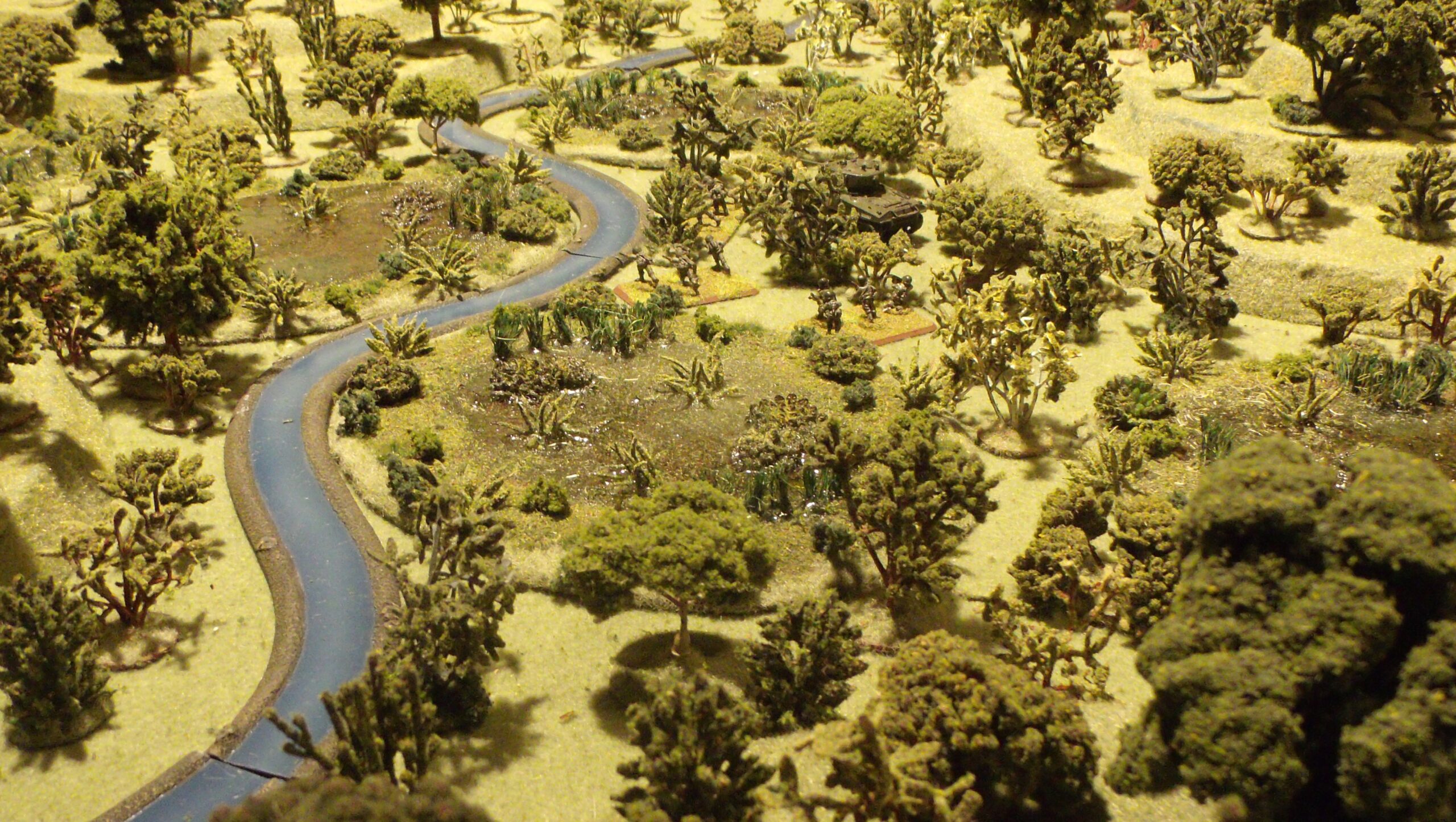
Playing games in a jungle environment offers several challenges. How do you get terrain to look like it’s a jungle and still be able to play on it? Finding where that proper balance is between play-ability and realism is sometimes difficult, and it’s different for everybody. This is what worked for us and hopefully it can give you some ideas and help you decide what you want to do.
Most people start by using a bunch of trees. Unfortunately trees are very tall and having a lot of them makes it hard to play a game without them getting in the way. For this reason we like to only use a few trees, and we spread them out so that there is sufficient playing room between them.
Most of these plants are small and don’t get in the way nearly as much as a full sized tree would. By using lots of smaller plants as underbrush we were able to make it look like a jungle but still give the space needed to move models around. We also like to keep the plants on individual bases so that they can easily be moved out of the way whenever necessary.
Water features are also very necessary to giving it that jungle look. Small creeks, streams, and marshy areas add a lot of realism and can also be used to create some more open areas.
Many jungles are located in very rugged terrain so hills can add a lot of realism to your jungle table. Because of the need to use lots of vegetation on the hills we have found that the stepped style of hill works the best. Vegetation that doesn’t sit flat is too easy to knock over and is very disruptive to the game.
Also remember that you don’t need to cover the entire table with these plants. Features like natural clearings, crop fields, roads, trails, and small villages can also be very useful in breaking up the table and reducing the number of plants needed to make it look good.









